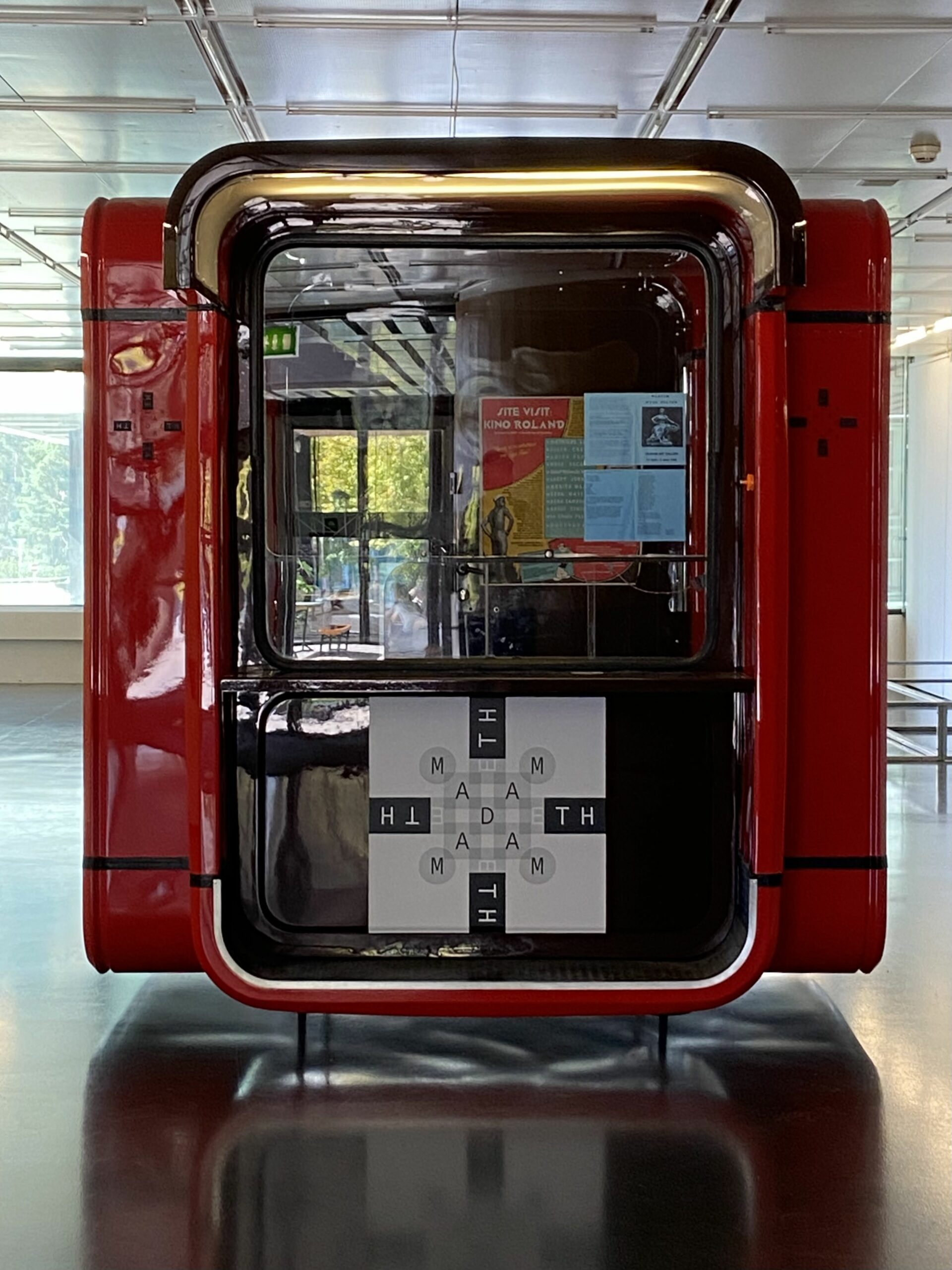00 Exploring Sound Qualities in Architectural Design
Space 1: ONA Corridor Floor G

This corridor is located on the G floor of the ONA Building. It acts as a connecting and shared space, linking all the studios and offices on that floor. It is a place of mobility, a place for printing, a place of representation, a place of active passiveness.
The corridor is roughly 1.5m wide and 62 metres long.
The flooring is made of linoleum, the walls of plaster and the ceiling is made of perforated metal sheets. There is a mix of wooden and glass surfaces due to the doors and opaque windows.
The flooring is made of linoleum, the walls of plaster and the ceiling is made of perforated metal sheets.
I find this space interesting because it has dynamic acoustics. The acoustics in the corridor are different if all the doors are closed than if one, some or all are open. When all the doors are closed, the acoustics reflect and bounce off the walls producing a slightly ping-pongy or zig-zaggy sound, an echo (with a 1.5s -2s tail). Higher pitched sounds from 2000 Hz and beyond tend to travel better and resonate longer as the low frequency sounds get absorbed by the perforated metal sheets more than the high pitched. Some soundwaves get absorbed by the metal sheets whereas some get reflected diffusely, which helps the acoustics of the corridor (making it somewhat less echoey as well as diminishing the reverberation time and decay.
When doors get opened you get to here some pieces of sound resonating from the rooms and sounds from the corridor escape in those rooms, changing the acoustic qualitites of that space. Sounds emitted in the corridor tend to have a shorter echo and disperse more when doors are opened.
Overall the corridor is a place of passive sounds, for me that means sounds that are not meant to be actively heard but still somehow affect us. A blend of boomy door slams, noisey and clucky printing sounds and mid-range muffled conversations turn the cuboid corridor into a living space.
How can we make corridors, at least acoustically, more engaging, active places?
Space 2: ONA Student Kitchen
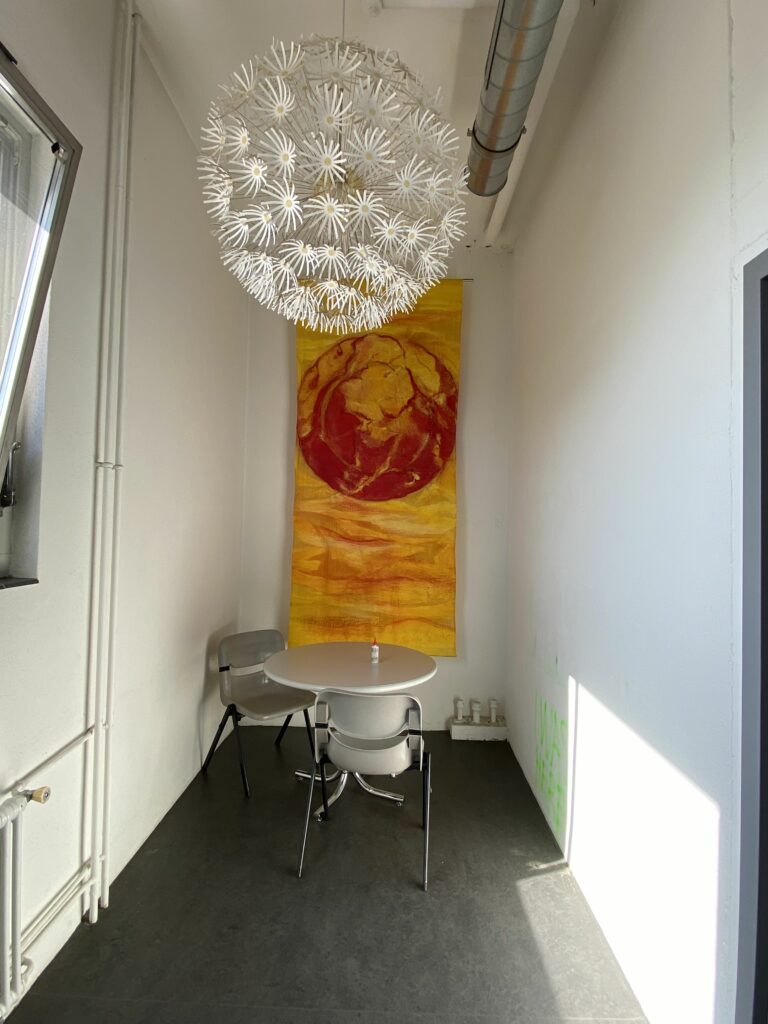
This space is room connected to the student kitchen in the ONA. It is (or should be) a space where students get together and have lunch and engage in discourse. This rather small space is 1.5 metres wide and 5 metres long with a high ceiling.
The walls and ceiling are fully made of concrete while the flooring is linoleum. A big window and a wooden door opposite of eachother also complement this room.
This space has a very boxy sound to it – tending to be harsh. The high frequencies reflect back and forth off the walls, floors and ceiling and can’t really escape nor get abbsorbed nowhere. Because of the small scale of the room the reflections are very fast and I find the acoustics rather uncomfortable, especially for a break room. All the surfaces are very glossy and smooth which amplifies the resonance and reflectiveness of this space.
The student kitchen’s ambient noise is also heard in this room, e.g. the footsteps, tap water, conversations and microwaves.
How could one transform a space like this to insure greater acoustic comfort?
Space 3: K67

Interior Photo from: HYPERLINK
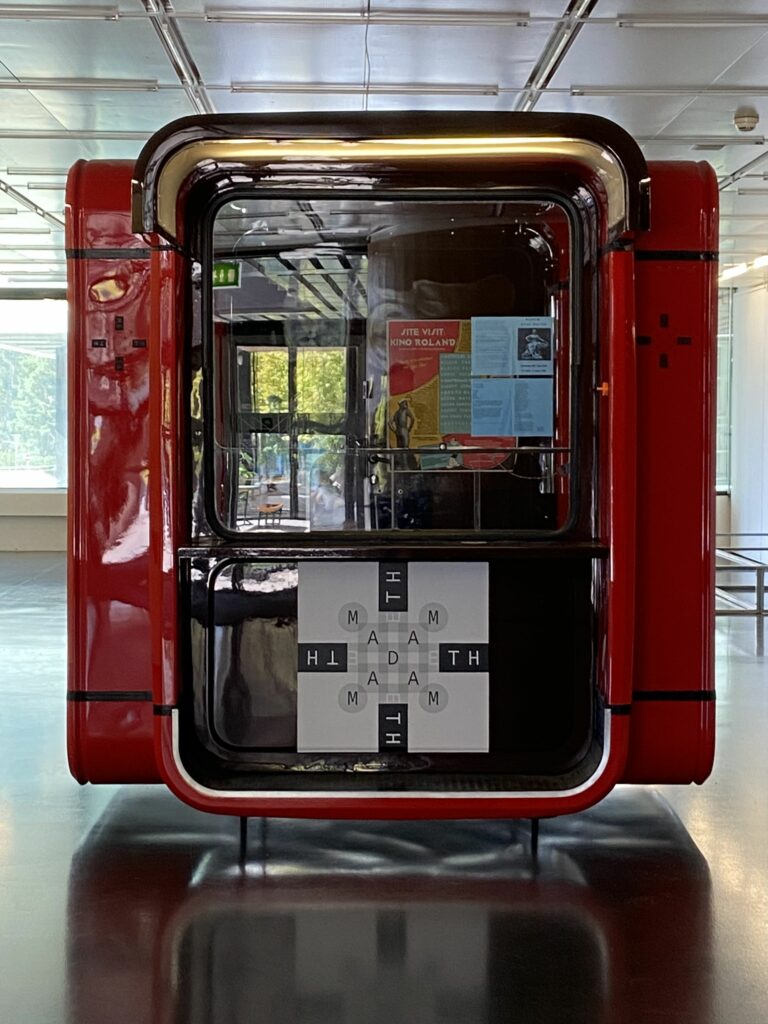
On the D Floor of the HIL building on Campus Hönggerberg you can find the Kiosk K67 since March 2019, a modular fiberglass structure designed in 1966 by architect Slovenian Saša Mächtig.
This modular architectonic system can be extended however one pleases, in countless configurations. It’s been a characteristic feature Eastern European streetscapes since the 60’s.
It was designed to fit almost every location and serve a pretty much infinite amount of functions such as news stand, market stand, parking booths, flower shops, student cafes etc.
Its materiality consists of a flexible reinforced polyfiber shell, as well as a steel structure and glass windows.
The dimensions of the base unit with feet is: 256.5 × 240 × 240 cm
From the inside you will hear the ambient noises outside. In the HIL D these mostly consist of footsteps, speech, ambient sounds from the Alumni cafeteria and the sounds of doors opening, swinging and closing.
The frontal facade of the kiosk has small sliding glass doors with little holes which let sound enter the kiosk. Even though one is aware of the outside, the osunds are not harsh. They sound rather mellow and dull.
Even though the interior of the K67 has very polished, flat and reflective surfaces the geometry of the Kiosk disperses the sound differently than a cuboid shape would. The curves, angles and layers of surfaces and materials trigger a rather warm and dense acoustic enviroment.
Interesting note: Fixed-media compositions by University of Houston composers inspired by the many functions of the KIOSK K67: HYPERLINK
Could one refit it to become a modular portable music studio?
Other notable space for consideration:
Inside of a slide. Very reflective, echoey, omnidirectional sound.
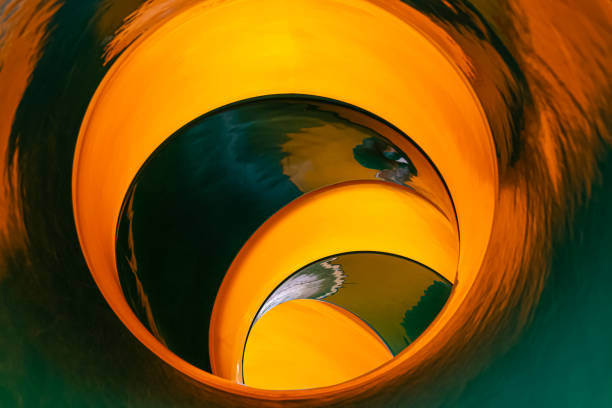
01 Exploring the Emotional Impact of Everyday Sounds
Construction work at my neighbours’ flat
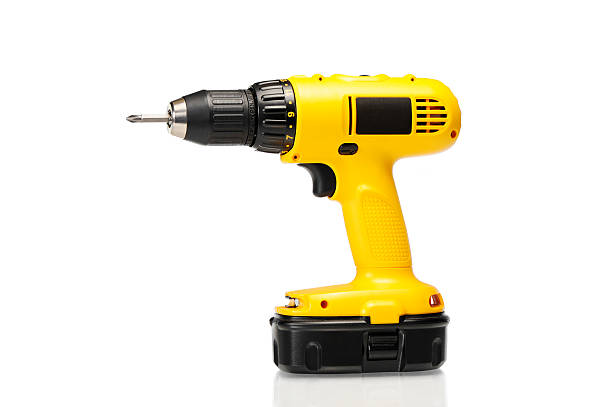
My neighbour decided on getting a new bathroom and I now live on a construction site. The clanging of metal, the angry shouts of the construction workers, the mix of languages, the rumbling of heavy machinery and the rhythmic pounding of hammers sound like a symphony of terror and one of progress. It generates an air of transformation but also of uncertainty. It’s been 3 weeks now and on Sundays I expect to being woken up by drilling noises at 8 AM. I almost feel a void without the accompanying noise. The noise is alive. The noise is textured. You cannot compare it to a white noise playlist on Youtube. It has variations in volume, rhythym and emotion. It’s the blend of all these sounds that I hear muffled through my door that symbolize thiis construction site. It’s akin to a love/hate relationship. It adds to an overall atmosphere and gives me a different perception of space.
Fokusraum ONA
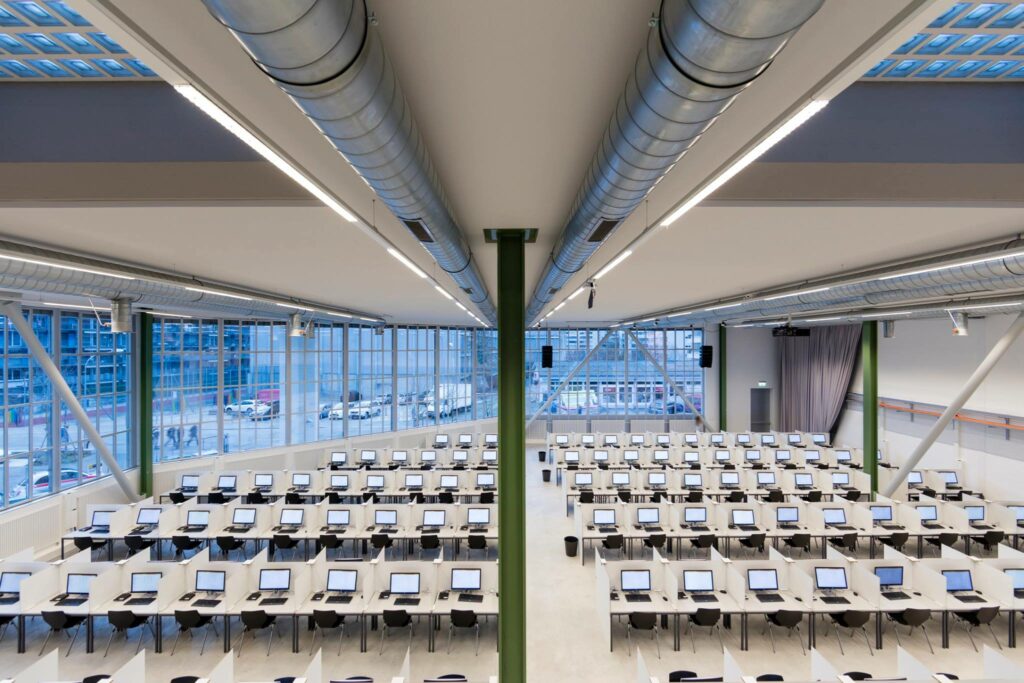
I strongly dislike the acoustic qualities of this space. I additionally feel like the name is an extra insult, the cherry on the top.
The materiality of the space is full of reflective surfaces. Hundreds of small square windows adorn the walls of the hall. The reflections are sharp and piercing. The lecturer’s voice disperses throughout the room, barely reaching the students’ ears, you have to sit in front of class to truly understand.
Each pen drop can be painfully heard in that space. The rustling of paper, the opening of backpacks and the crackling of food bags are a cacophony of ambient noise that define the space in another way: The UNFOKUSHALLE.
It’s not just the reflectiveness of the space but also it’s physical space. The big geometry enables a long reverberation time, but the reflections don’t correlate with the size and the reverb doesn’t please the way it does in an acoustically conscious setting.
02 Empirical and numerical estimation of room acoustic properties.
Space 1: ONA Corridor Floor G


Sengpiel RT60:

Space 2: ONA Student Kitchen


Sengpiel RT 60:
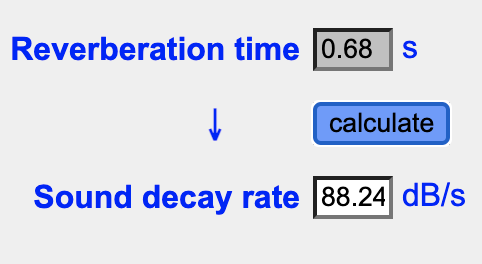
Task 2 could not be completed because the online calculator does not work…


05 Sound making – Sound walking
PART 1:
PAUL THEODOR BAN & RUBEN ARTHUR TAGMANN
Ankergasse Zurich

Some objects very specific to the location are forks and plates. Located next to the Münstergasse, at which multiple restaurants and coffee houses surround the space, the noise of cutlery used stir the coffee or to enjoy delicious meals, is very present within the the chatter and the steps of the people keeping busy alley alive during daytime. The sounds produced are very clicky and high pitched. Due to the low amplitude of the sound produced by the object, it is quite fastly absorbed and doesn’t resume in any long decayed reverberation. Still it creates an interesting soundscape with just little changes in the matter of the objects. Differences in the cutlery used or in the size of the paltes on which it is used, the sounds differ in pitch and the loudness increases when the meal is harder and suddenly cracks as for example a crispy cake base.
PART 2:
Ankengasse
Walk 1:
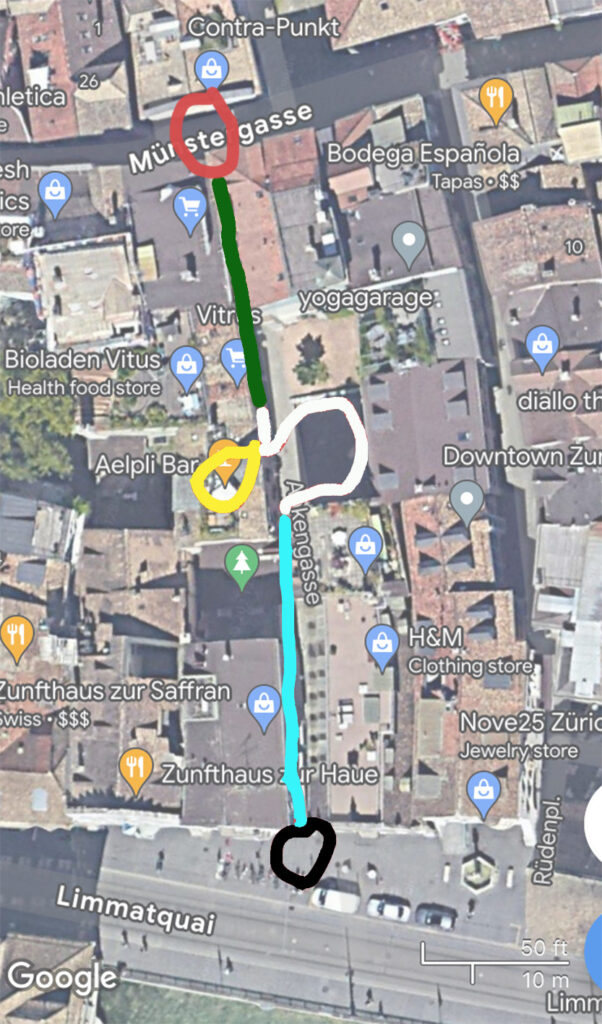
Red Area (00:00-00:10):
Starting point of the walk. Münstergasse is a pretty narrow alleyway that pierces the dense urban fabric of the Niederdorf. It is always packed to the brim with people and you can constantly hear chatter and steps. It it quite loud as well.
Green Area (00:10-00:50):
The first section of Ankengasse is very narrow and you feel like you’re in a tunnel. The sounds from the Münstergasse feel like you are hearing them through a pipe and one’s footsteps rapidly bounce off the walls and reflect in space
White Area (00:50-00:54) and (01:24-02:14):
The main “square” of Ankengasse, known for its fountain. The water drops cannot be heard on the narrow alley but are very audible once on the square. The acoustic quality of this space is also reflective due to the 6-story buildings towering over it.
Yellow Area (00:54-01:24):
The Älpli Bar. A typical Swiss tavern, made entirely out of wood. They specialize in traditional Swiss Ländler Musik. The acoustic quality is warm and welcoming, with the wood absorbing quite some sound waves.
Blue Area (02:14-02:34):
Similar acoustic properties as the green area.
Black Area (02:34-End): The loudest part of our walk. The culmination of open space, river and bikes and cars and trams.
Walk 2:


